drawing of big tree in front of a house
The best trees for front yards and gardens can transform a house into a welcoming home. Providing a burst of spring blossom, a vivid crop of fruit or berries, or stunning fall leaf colors, they make an ever-changing living feature which boosts curb appeal. Additionally, a tree in the front yard can provide privacy, absorb noise pollution and encourage useful wildlife to visit the garden.
When selecting the best trees for front yards, there are some important rules to consider. Depending on the size of your home and its proximity to the neighbors', it's important not to go too large. A tree that looks the right size and shape now might quadruple in size over the next decade, spreading roots which could cause problems with building foundations – either yours or someone else's.
As a major investment, it's crucial to buy the right tree for the right place. Like all plants, different species of tree have different demands. Before you buy, work out which way your front yard faces, what kind of soil you have – and the climate conditions. Harsh winters could kill some tender trees, for example.
Including a tree in your front garden ideas will provide a strong focal point, so ensure that it is going to give the best possible value by working hard in more than one season. Evergreens are reliable in that they will give year-round color and won't shed their leaves, but deciduous trees are good value if you pick a species which has stunning spring blossom, blazing fall color and interesting bark after the leaves fall.
Once the correct decision has been made, a happy tree can be surprisingly low maintenance, providing years of uninterrupted interest.
Add interest to your plot with the best trees for front yards
Whether you're looking to create privacy at the front of your home or want to inject height and color for added curb appeal, the best trees for front yards will help you achieve the right look for your plot.
1. Parrotia persica 'Vanessa'
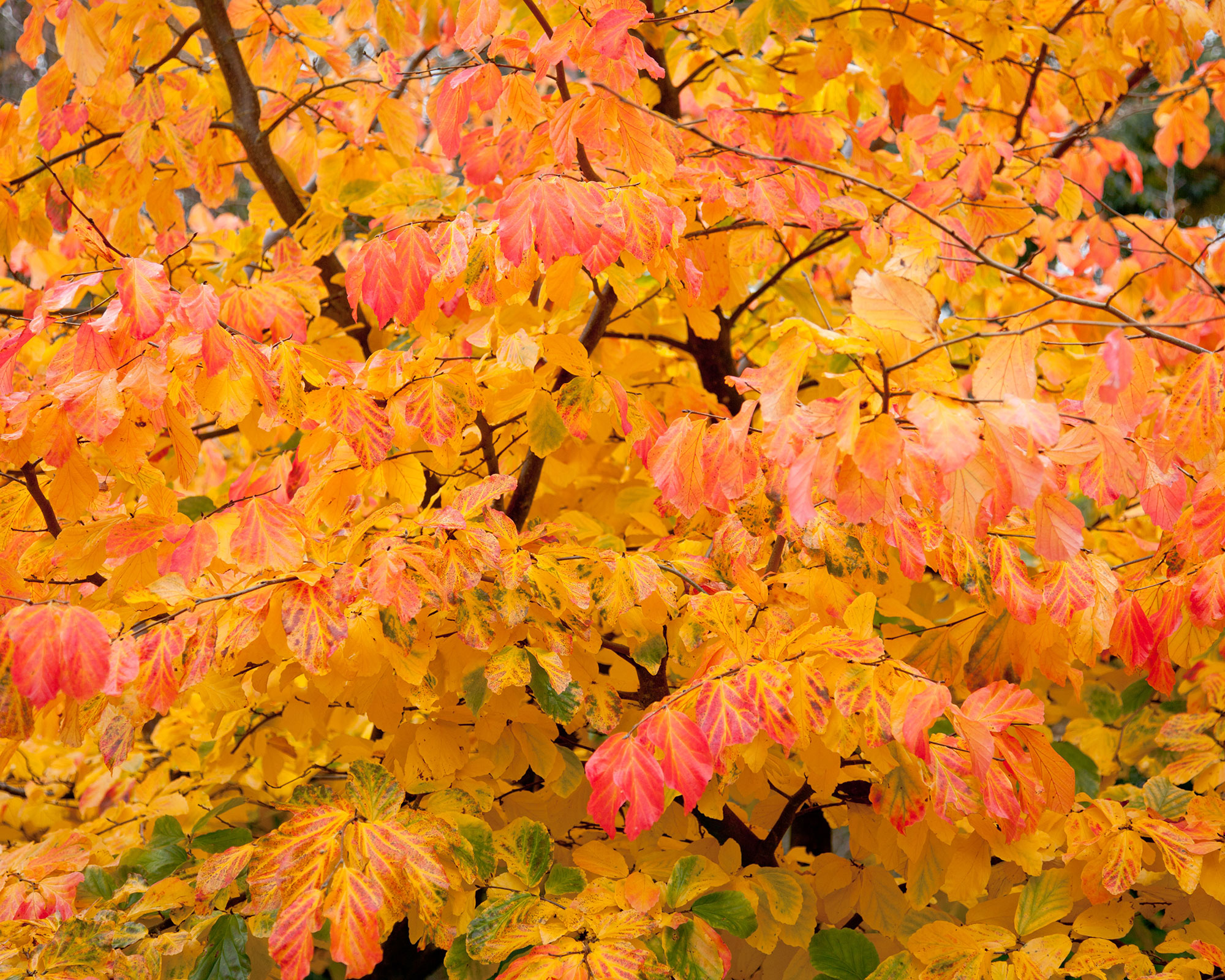
(Image credit: Ross Jolliffe/Alamy Stock Photo)
Also known as Persian Ironwood, this is a spreading specimen tree, which can be multi-stemmed, with textured, peeling bark. It flowers in the winter, but really comes into its own in the fall, when the large oval leaves turn to glowing red, intense purple and amber.
'This can be a huge tree which is not suitable for a smaller plot, but P.persica 'Vanessa' is a slender, upright tree which spreads up to 8ft (2.5m) wide at its ultimate height of 26ft (8m),' reports tree expert Michael Buck Nursery Manager at Form Plants (opens in new tab), which provides trees and shrubs for RHS Chelsea Flower Show. It's hardy from zones 5-8.
2. Cornus Kousa
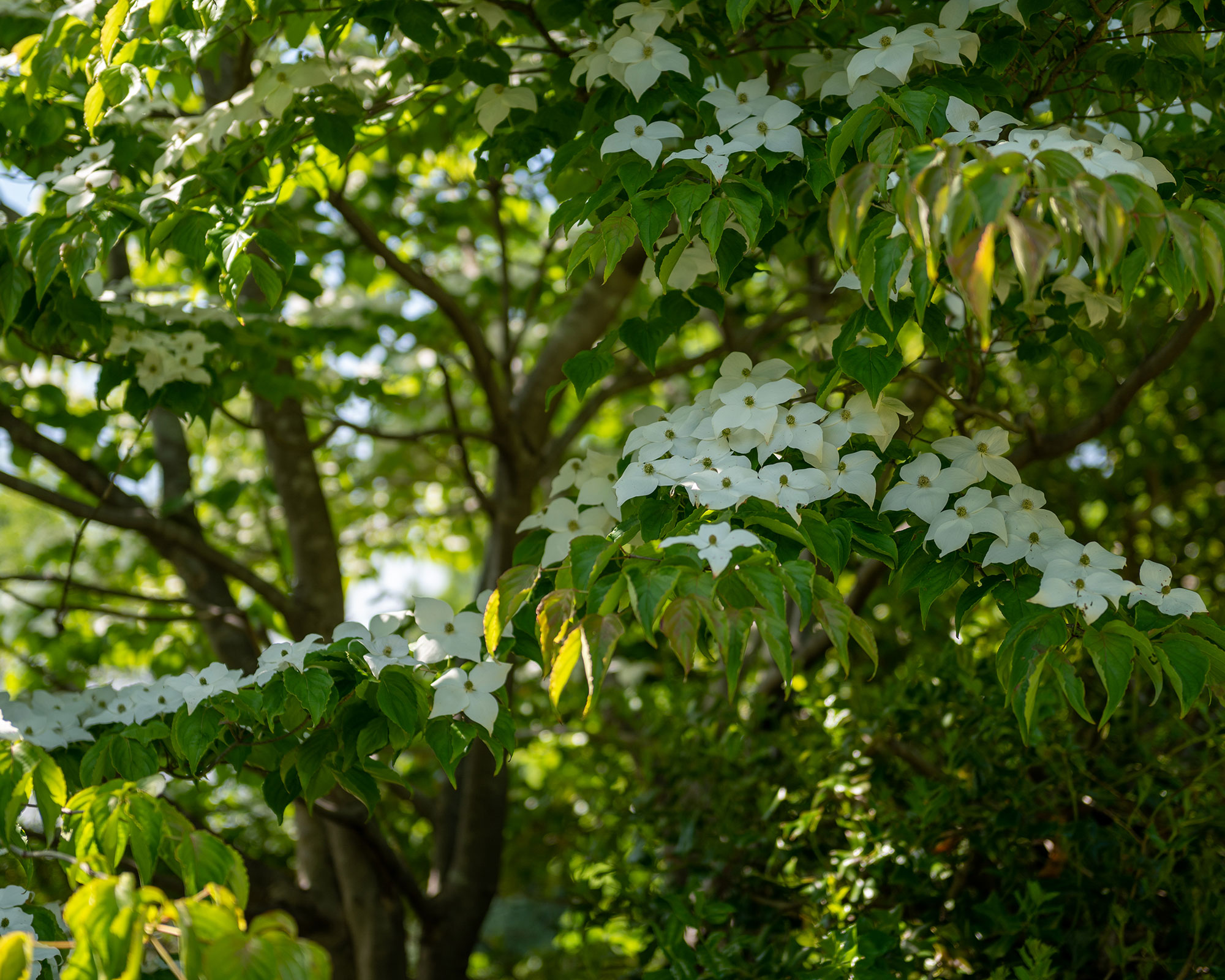
(Image credit: M.Arai/Getty Images)
Smothered in creamy flowers in early summer, the dogwood or Cornus kousa adds interest through the rest of the year, with purple/red fall foliage and clusters of pink fruit.
If you're looking for the best plants for small gardens, a dwarf dogwood, such as Cornus kousa 'Angyo Dwarf' will only reach 4-5ft (1.2-1.5m) tall, but other varieties can top 23-26ft (7-8m). 'China Girl,' a larger one, has an attractive dome shape and reaches 13-26ft (4-8m) in 20 years. 'Milky Way' is another top choice. These trees need full sun or partial shade, and they prefer a moist (but not soggy) neutral to acid soil.
3. Amelanchier lamarkii
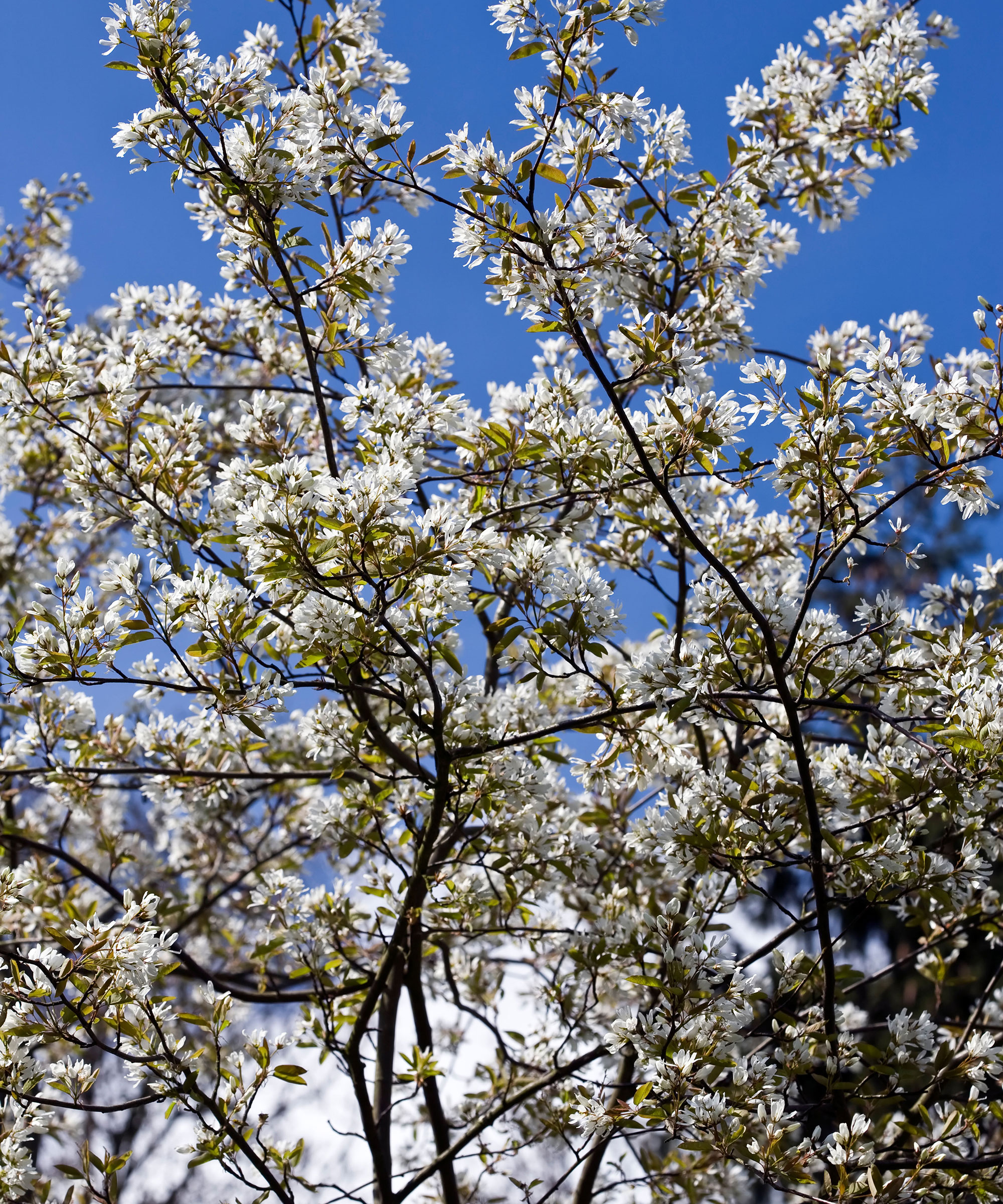
(Image credit: Christina Bollen/Alamy Stock Photo)
Upright trees will not overwhelm small gardens, and this one, also called a serviceberry or June Berry, has clusters of pretty white star-shaped flowers on coppery colored young leaves in spring.
Amelanchier lamarckii will not top 16.5ft (5m) tall. If you have more space, try Amelanchier laevis. It will grow to 26ft (8m) high, with lots of spring blossom followed by purple fruits and then burnished orange autumn foliage.
These are one of the best trees for front yards because they are hardy and can cope with damp conditions and most soil types, although they prefer clay or sandy soil.
4. Strawberry Tree (Arbutus unedo)
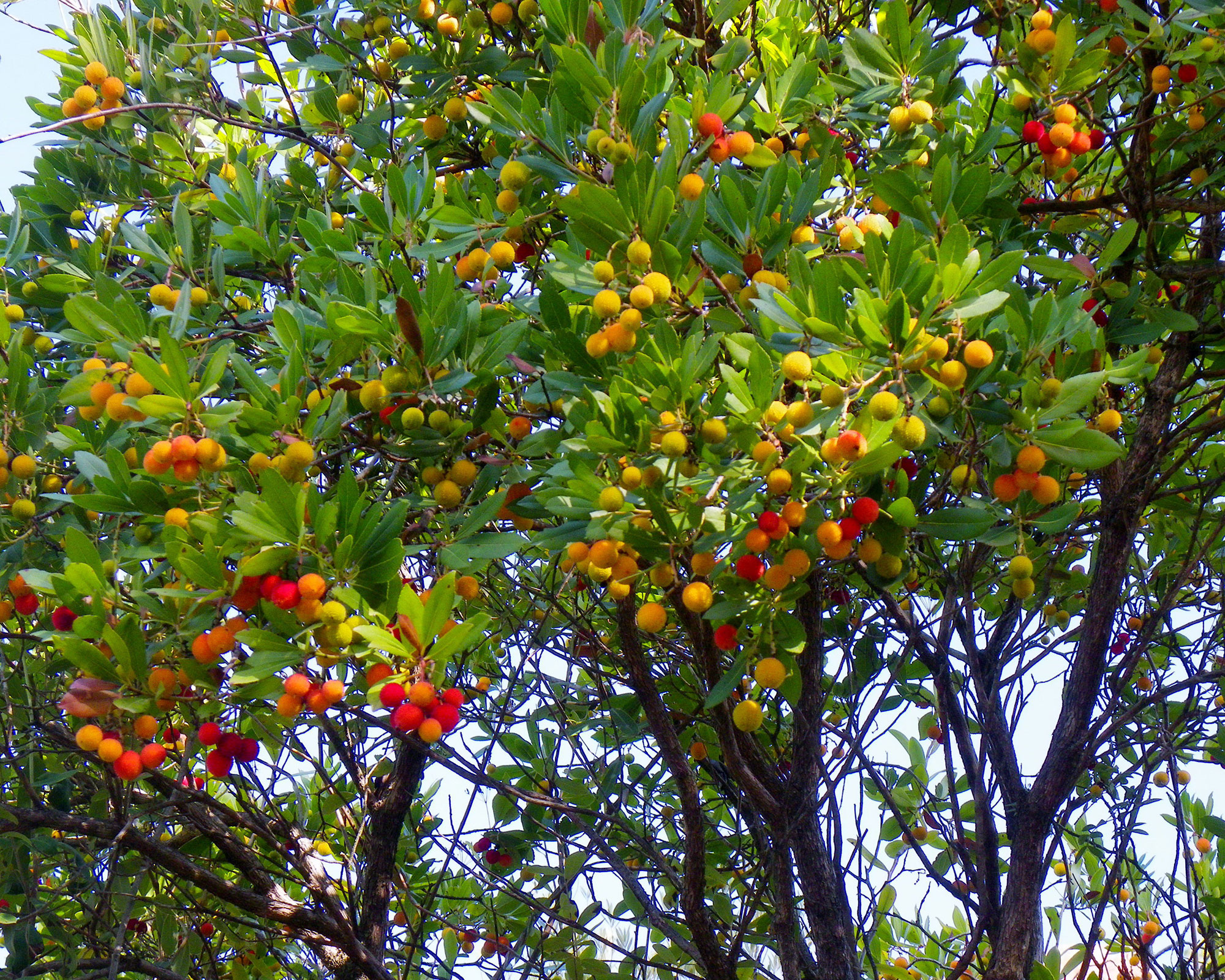
(Image credit: Marialuisa Wittlin/Getty Images)
If you're searching for an evergreen option for the best trees for front yards, this is a good choice. It has large, leathery leaves, clusters of white flowers in late summer and fall, and then charming red textured fruits which give it the common name of the Strawberry Tree.
If you are looking for garden screening ideas to hide an unsightly view from your front windows, this is a great choice, but it's equally striking as a standalone feature tree. It likes well drained soil, and it is best suited to zones 8b-11.
5. Saucer Magnolia
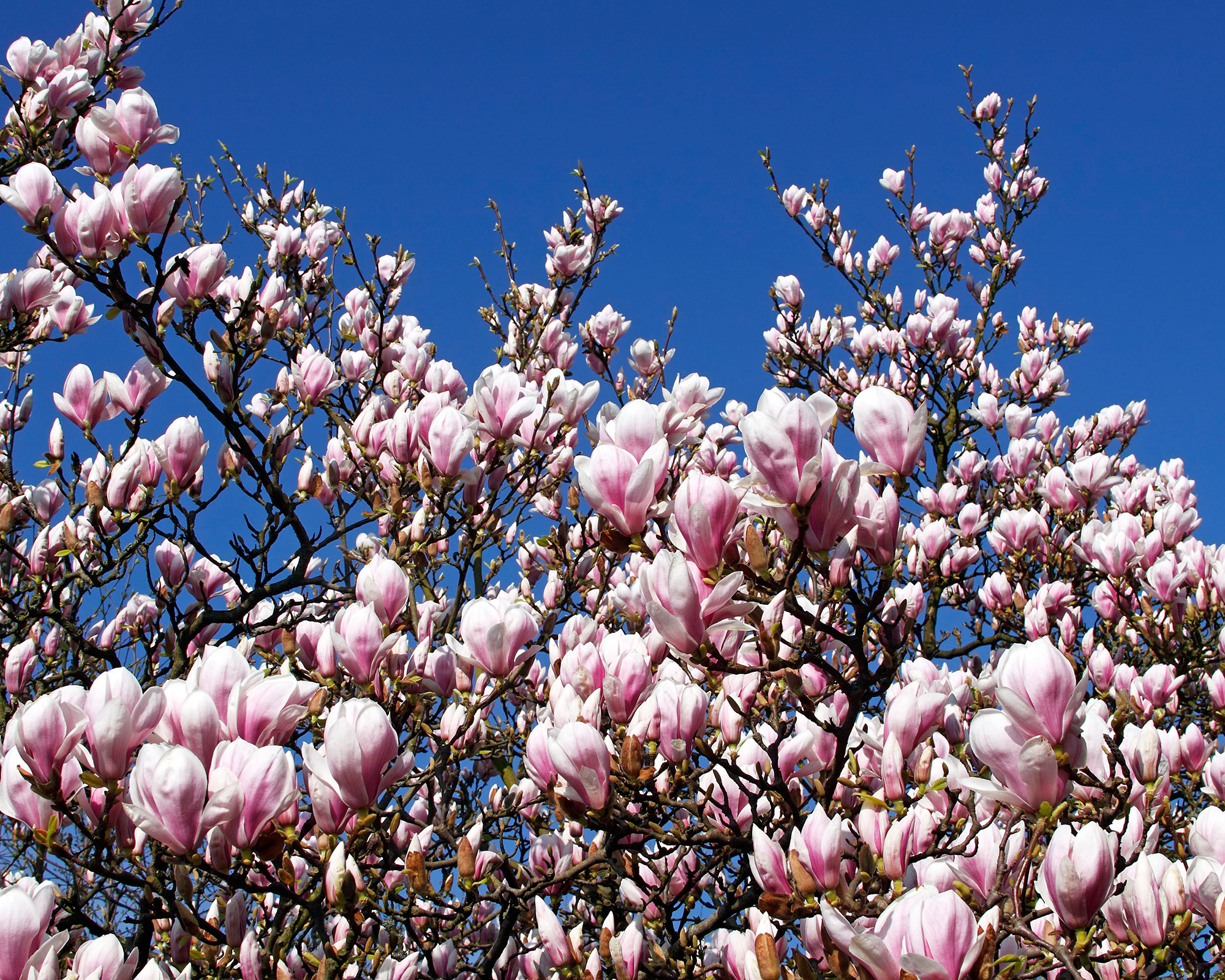
(Image credit: Alamy Stock Photo)
One of the most popular flowering trees in the US, this small deciduous low-branched tree has large, goblet-shaped flowers in blushed pink, white or soft purple from late February to early April. Plant in moist, acid soil, in full sun.
Avoid very exposed areas, as a frost can ruin the display of blossom, turning the petals brown. The tree is hardy for zones 4-9, but seasonal protection is advisable in areas with cold winters for the first few years. There are plenty of tips on how to protect plants from frost in our dedicated guide, too.
6. Colorado Blue Spruce
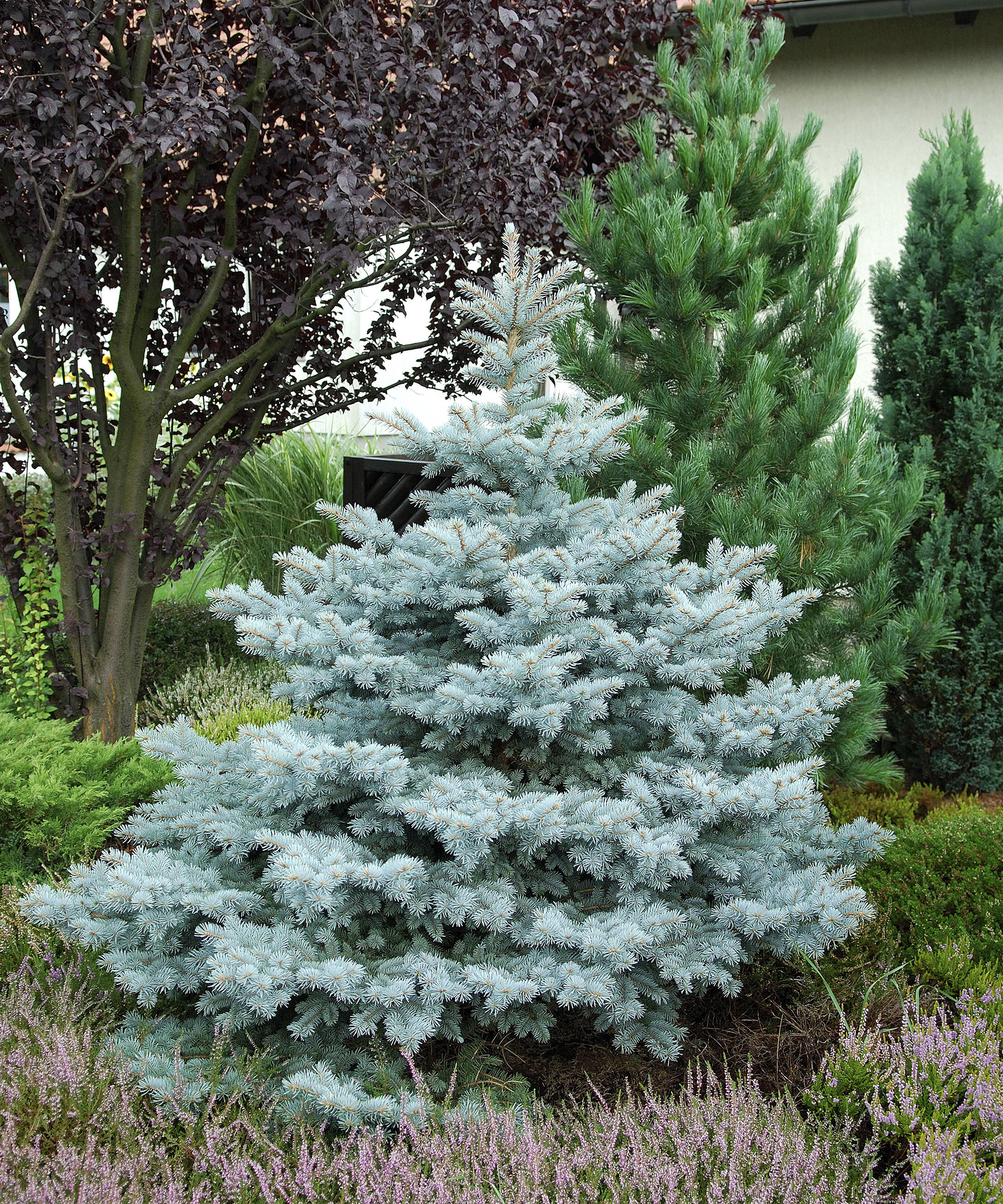
(Image credit: Blickwinkel/Alamy Stock Photo)
For a no-nonsense, all year-round tree, this one, also known as picea pungens is a great choice. With a beautiful soft blue silvery foliage, it has spiky leaves and light brown winter buds. It's native to Colorado, New Mexico, Utah, Wyoming and Idaho, and can cope with high elevations.
For a large yard, try 'Fat Albert' which has a symmetrical pyramid shape, growing as big as 10ft (3m). For a little yard, go for 'Globosa' or 'Montgomery.' Or try 'Iseli Fastigiate' which grows in a tall but narrow column. Grow in full sun.
7. Crab Apple
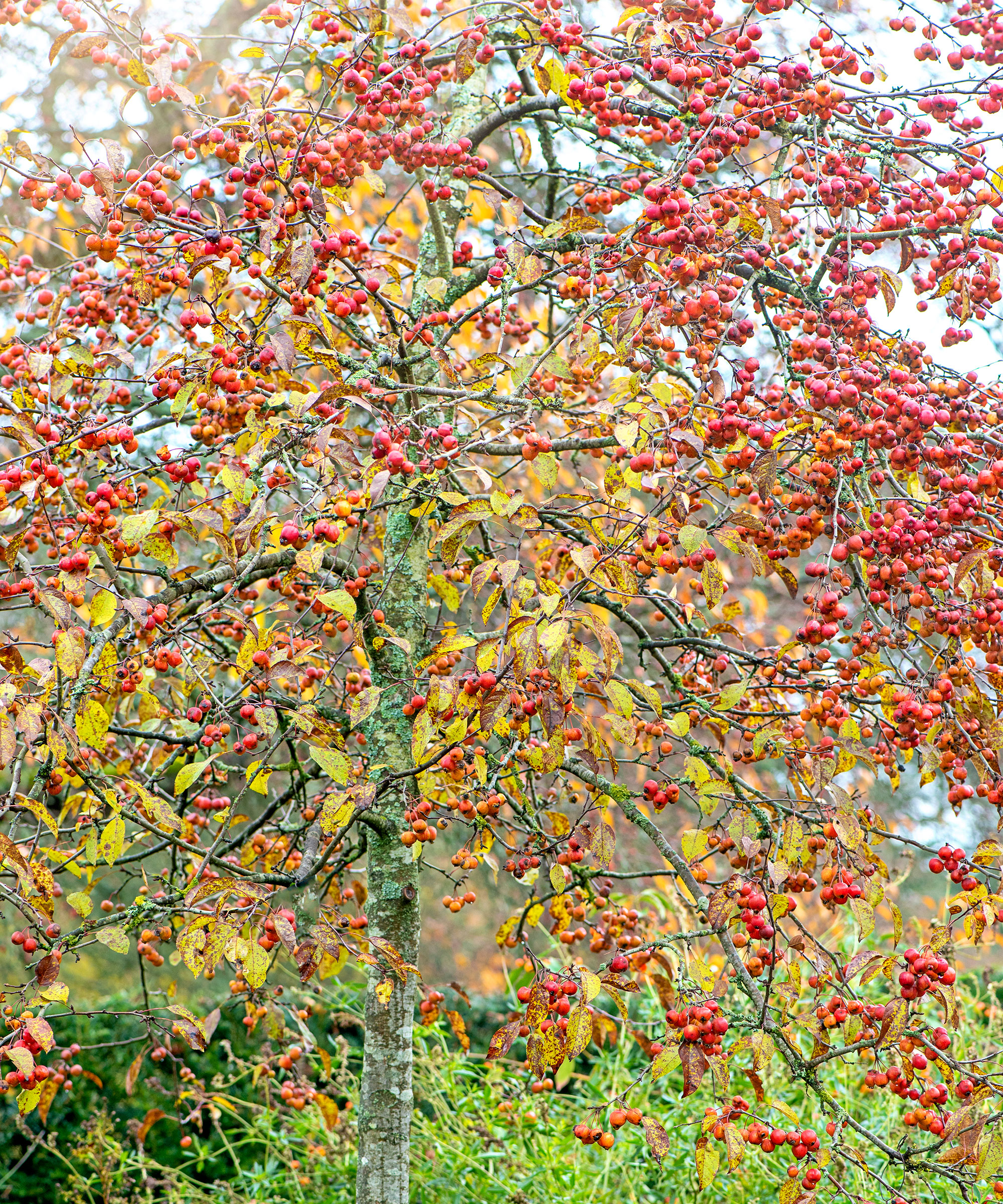
(Image credit: Jacky Parker Photography/Getty Images)
With a froth of blossom in spring, and the cutest autumn fruits in ruby red, blush orange and gold, crab apples are highly covetable as one of the best flowering trees. With so many different varieties, check the ultimate height carefully before buying.
Small ones include malus 'Butterball' and malus 'Wisley Crab' which can reach about 13ft (4m). But it's malus 'Evereste' which is the choice of top tree expert Michael Buck of Form Plants. 'It has amazing prolific blooms in spring that produce shiny red crabs. This tree will work hard year-round,' he says. 'My favorite form is the multi stem, with its gnarly look.'
8. Acer griseum
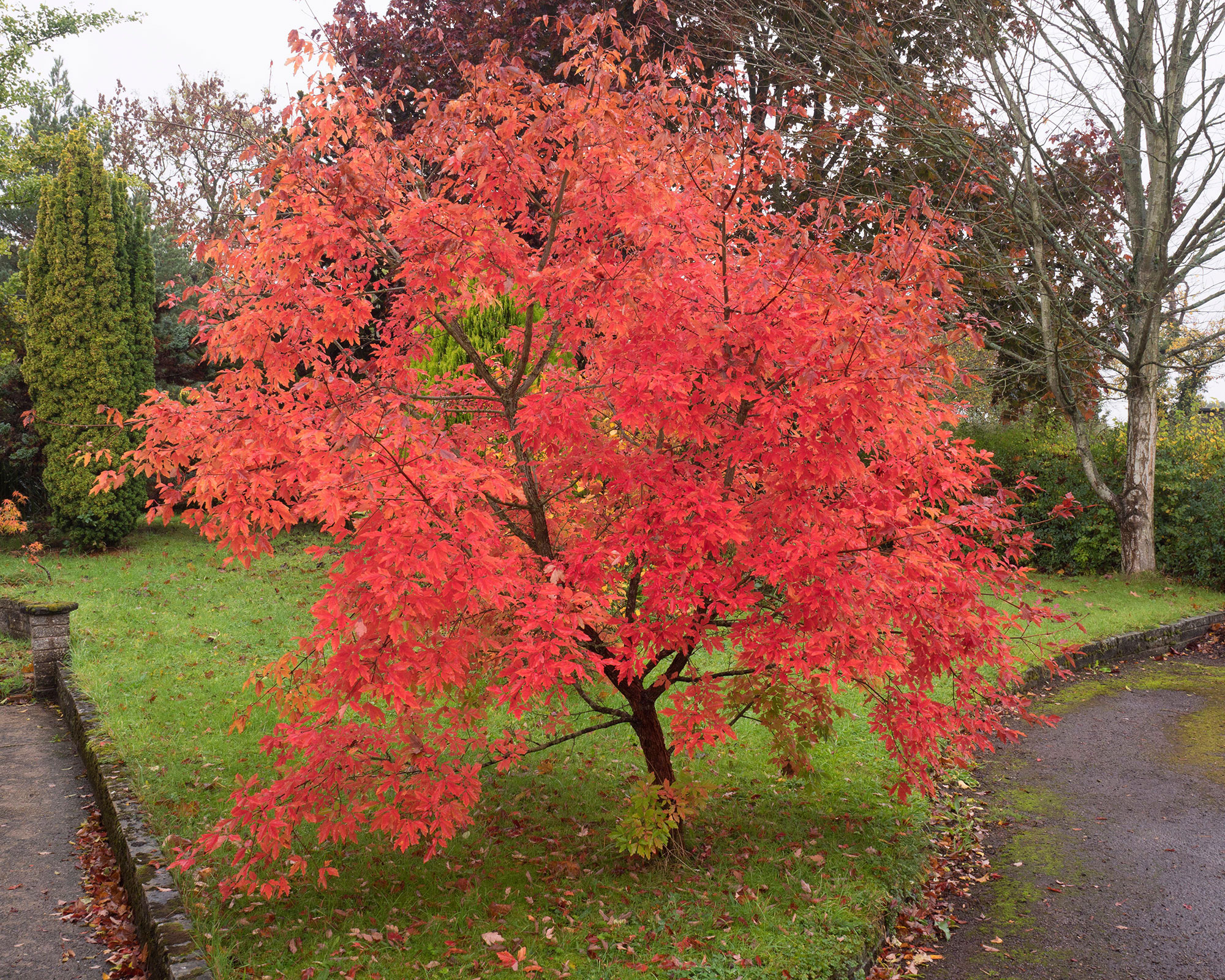
(Image credit: Margaret Welby/Alamy Stock Photo)
If you're learning how to grow acers, this variety is always a favorite with garden designers, partly for its wonderfully tactile bronze-colored peeling bark (giving rise to the common name of Paper-Bark Maple).
It is deciduous, and it has a lovely spreading shape. Once the treat of the fiery fall foliage has passed, you will be left with a fascinating feature tree. 'If you can fit one of these in, you won't regret it,' says Michael Buck of Form Plants.
Acers are also one of the best trees to grow in pots, making them a practical option for less-than-large front yards.
9. Betula utilis 'Jacquemontii'
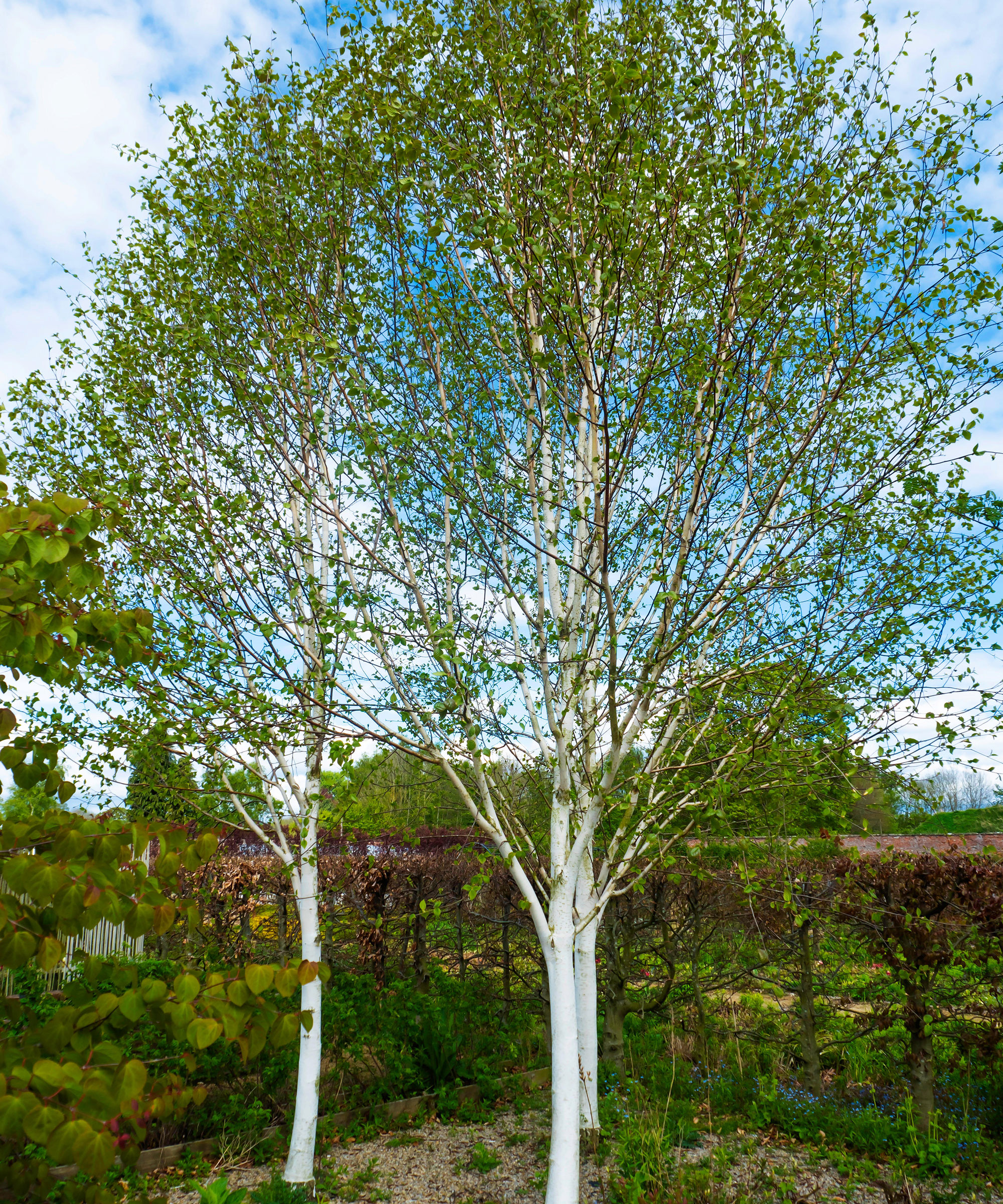
(Image credit: Peter Jordan/Alamy Stock Photo)
A deciduous tree which provides reliable year-round interest. Pretty catkins, then fluttery soft spring green leaves, some intense fall colors and then glowing white bark in winter.
A top option if you're searching for the best low maintenance trees, these are easy to care for and withstand harsh winters. They grow in hardiness zones 2-7 in the USA, and heat zones 1-7. For smaller gardens, try a single stem variety.
10. Crepe/Crape Myrtle
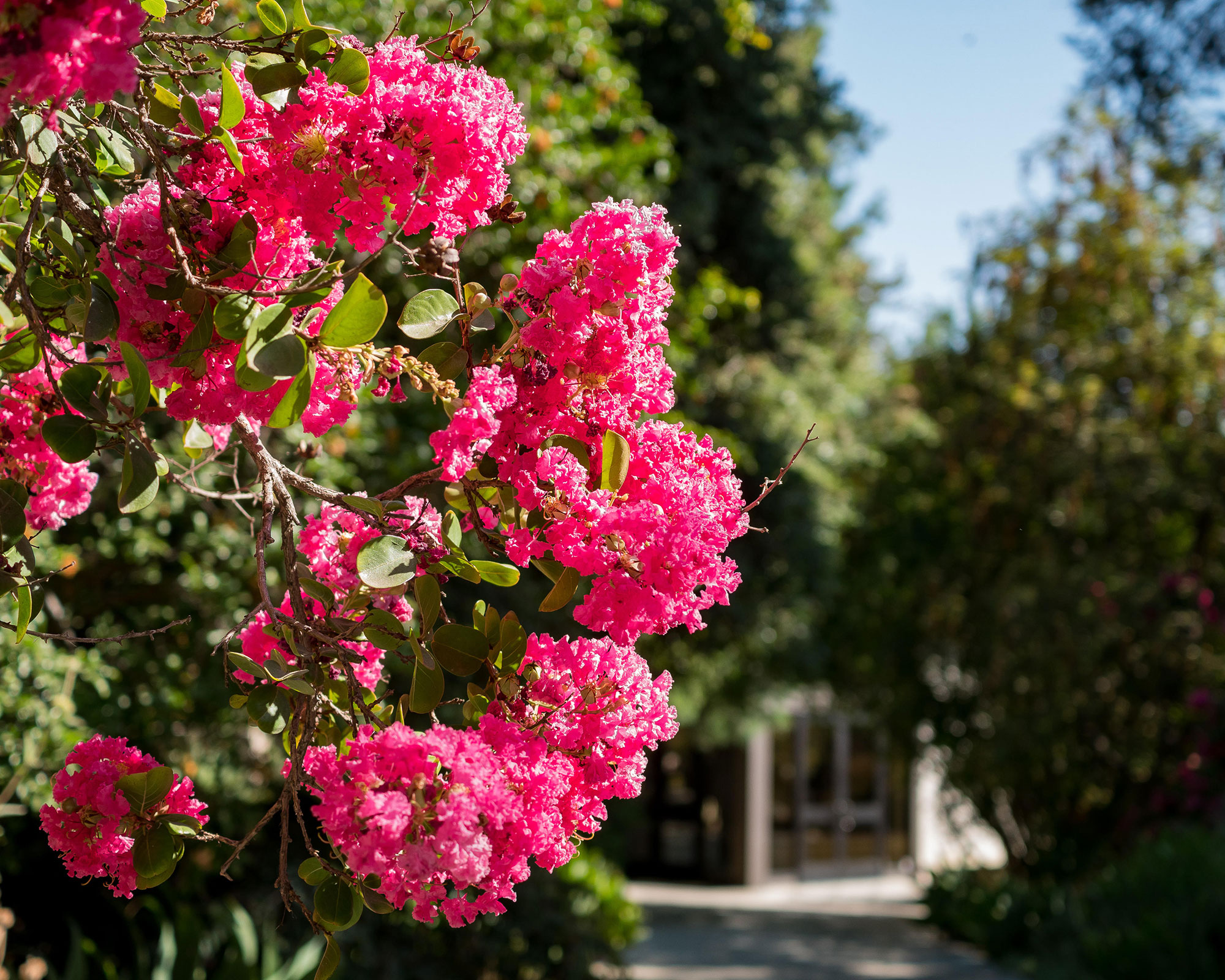
(Image credit: Chon Kit Leong/Alamy Stock Photo)
A tree that flowers on and on is a perfect option if you're searching for the best trees for front yards. The Crepe (or Crape) Myrtle, or lagerstroemia, is called '100 Days Red' in China, because it keeps producing crinkly, paper-like flowers in vivid hues of purple, violet and pink over the summer.
Plant in a sheltered spot, preferably south or west facing. It will not require pruning, and it's a slow grower, which could reach 26ft (8m) tall in 20 years. If a cold snap is forecast, protect with horticultural fleece. Suitable for US plant hardiness zones 7 and above.
11. Weeping cherry
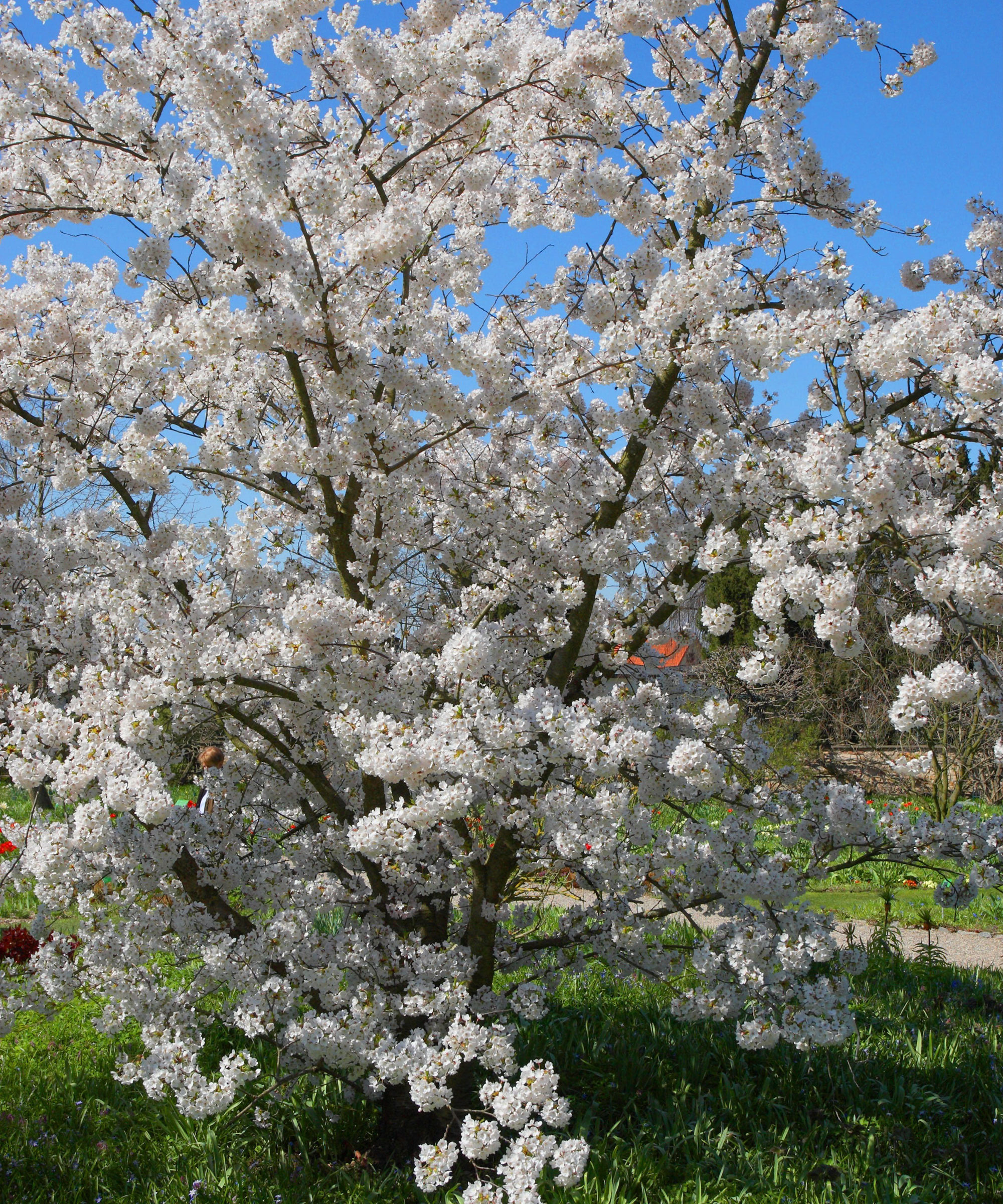
(Image credit: Werner Layer/Alamy Stock Photo)
A confetti of pink or white petals characterises the cherry tree, and there's one for every sized garden. For a truly compact tree, try Prunus yedoensis. It has weeping branches and white almond-scented blossom. It will reach only 10ft (3m) tall in 10 years.
What tree looks good in front of house?
This depends on a number of factors. Michael Buck of Form Plants: 'Ask yourself some key questions. Will the tree provide shade in a particular area where shade is welcome? Will the tree screen from a neighbor? Will the tree provide structure? All of these questions along with the shape and size of the front garden will create a strong starting point for making this decision.'
Don't forget about the space at the base of your tree too. Adding the best plants under trees to your plot will ensure you create plenty of interest at ground level as well as up high.
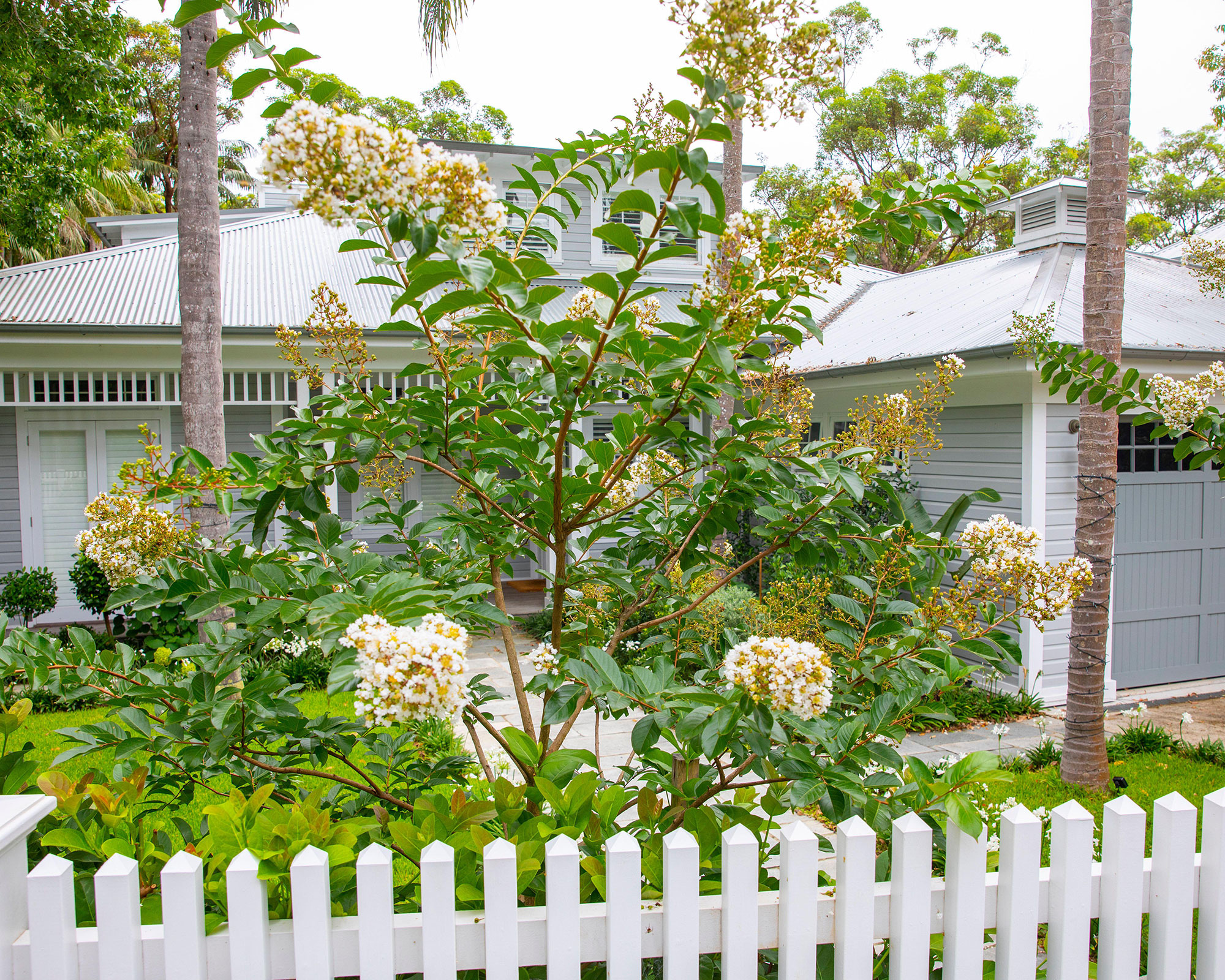
Crepe myrtle in full flower
(Image credit: Martin Berry/Alamy Stock Photo)
How do I pick a tree for my front yard?
The size of your space will have a major impact on your choice, says Michael Buck. 'Generally speaking, a tree root system grows up to three times the height of a tree at mature age. So, if your front yard is smaller than 16ft (5m), then look into large shrubs or shallow rooting trees like Heptacodium and Betula.'
If the choice is just too bewildering, ask for help. 'When taking the decision to invest in a tree for a front garden, the process should not be impulsive but based on research,' adds Michael. 'Trees have varied growth habits both in the crown, but also in the root system.'
He recommends asking a specialist nursery or garden centre staff for help. 'It allows you to dive deep into their wealth of knowledge. Showing images of your garden, or even better, allowing them to visit the planting site, enables them to fully understand your needs. They can offer advice based on this and also some options that you may not have even thought were possible.'
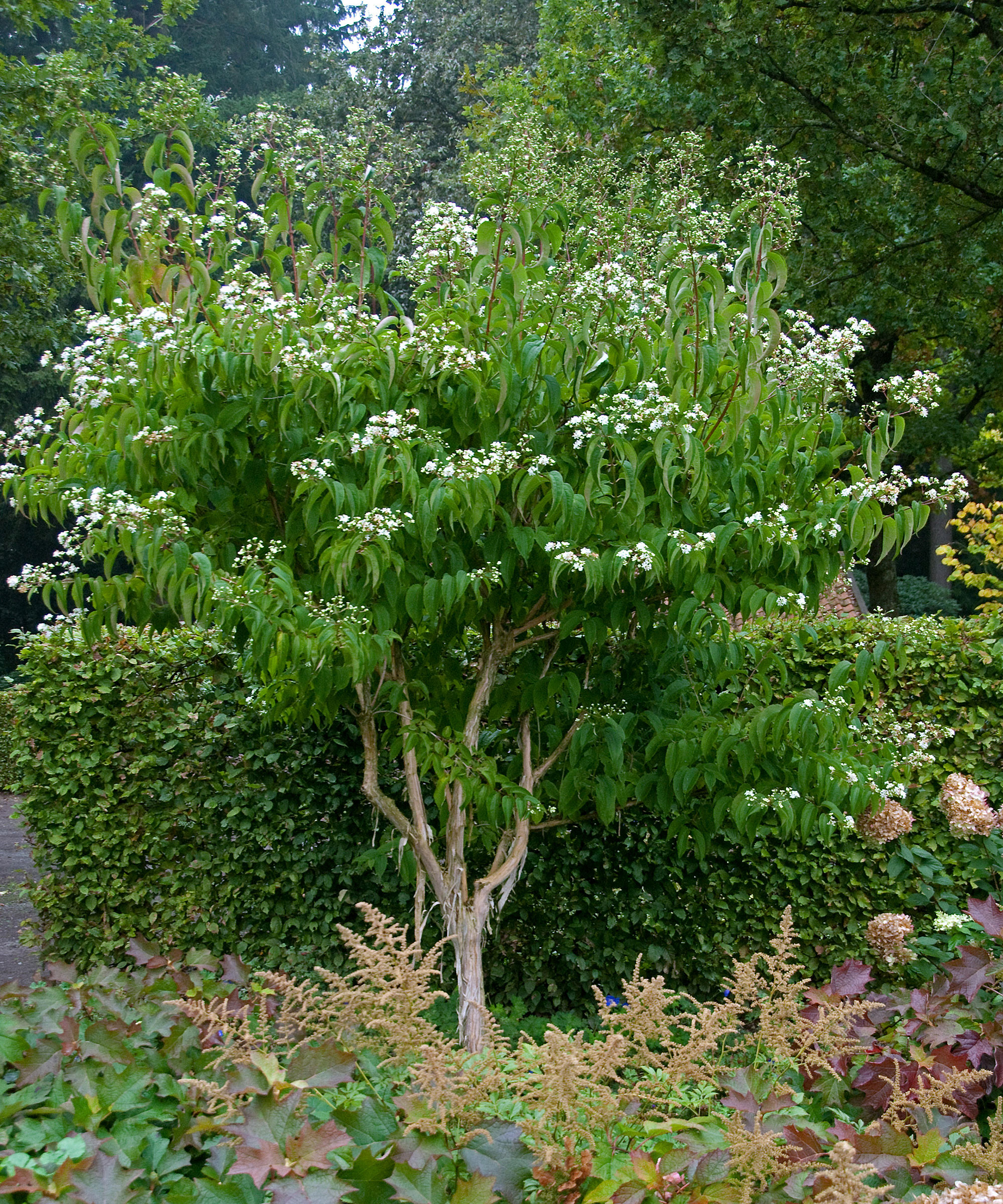
(Image credit: Blickwinkel/Alamy Stock Photo)
Is a deciduous or an evergreen tree best for my front yard?
Both types of tree can offer benefits for your landscaping ideas for front of house. For extra interest with evergreens, try Magnolia grandiflora for larger spaces and Osmanthus x burkwoodii as a smaller one. Both provide fragrant flowers, as well as year-round foliage.
The right deciduous tree can also provide interest through the whole year, advises Michael Buck. He recommends Betula utilis 'Jacquemontii' for its early catkins that lead into a soft leaf structure that provides dappled shade. 'Moving into the winter with the yellow leaves and vivid white bark means this option remains interesting throughout.'
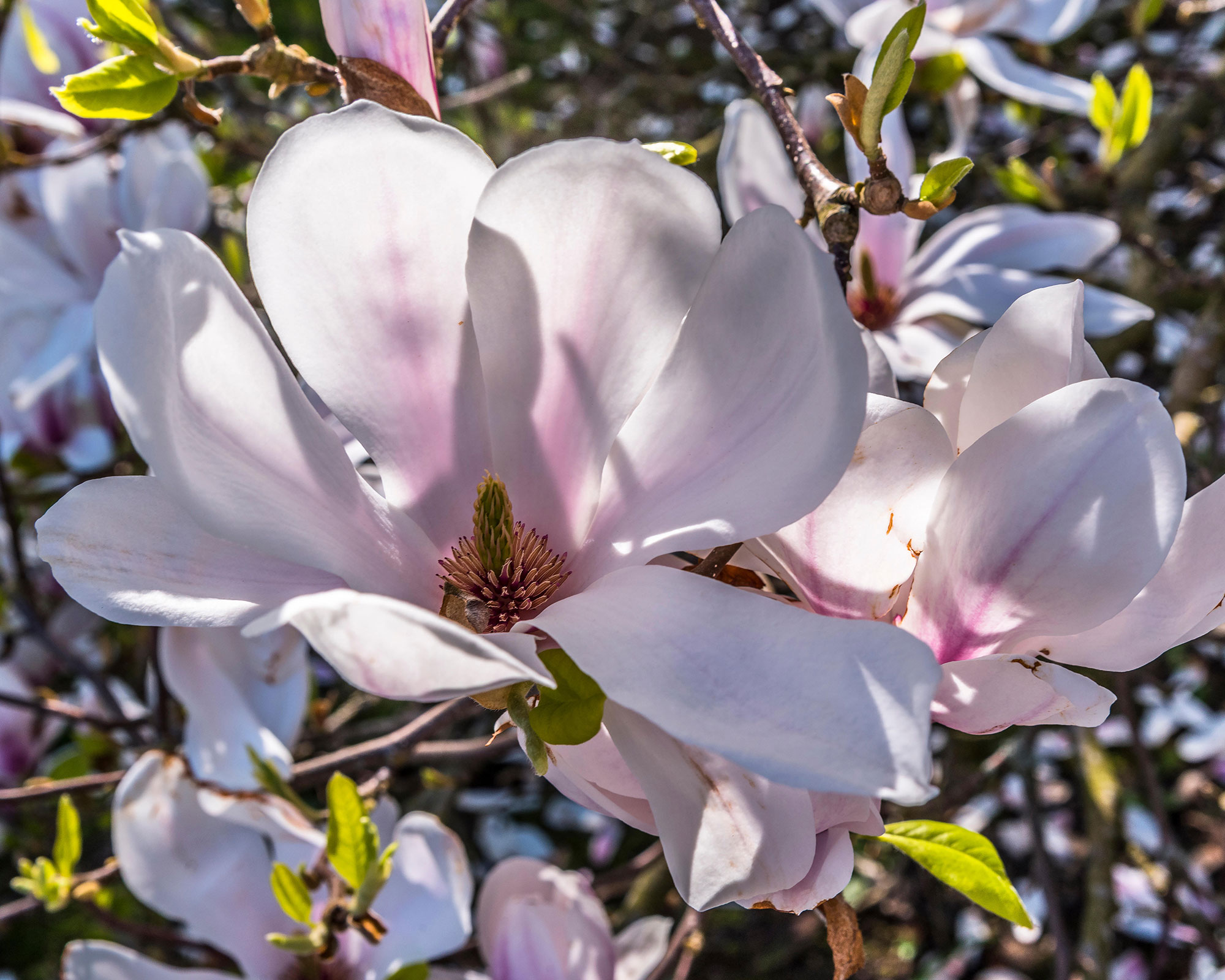
Magnolia grandiflora in bloom
(Image credit: Alamy)
Source: https://www.gardeningetc.com/advice/best-trees-for-front-yards
0 Response to "drawing of big tree in front of a house"
Post a Comment